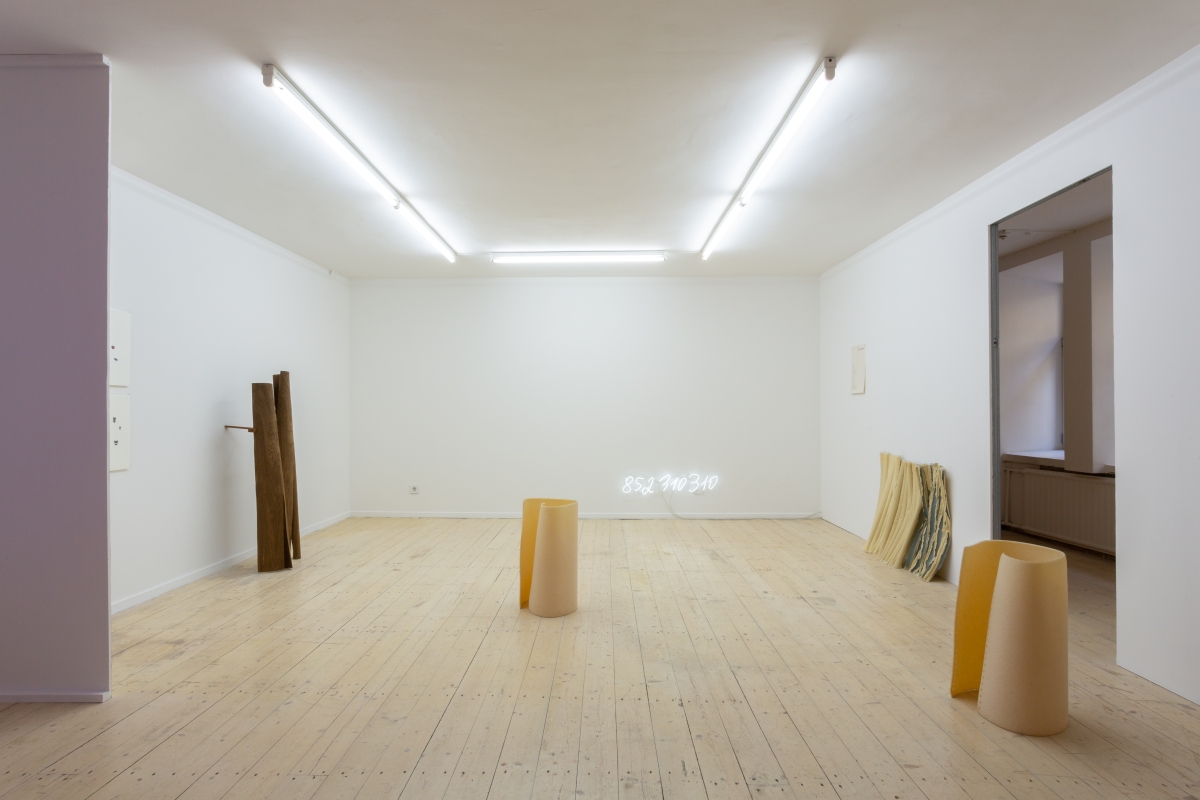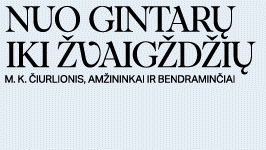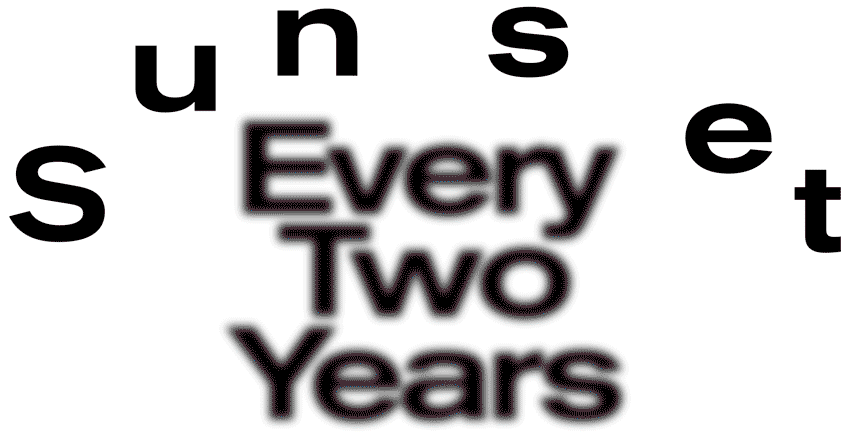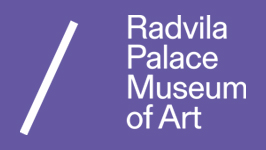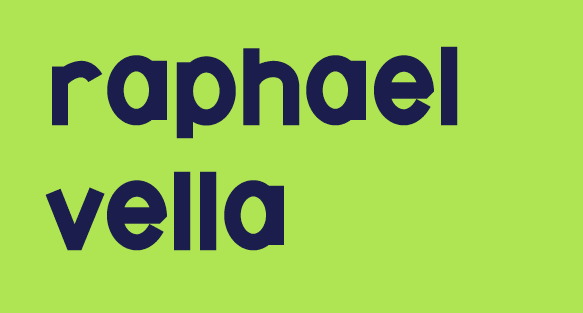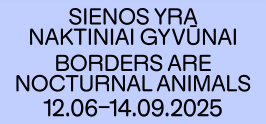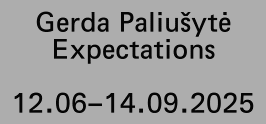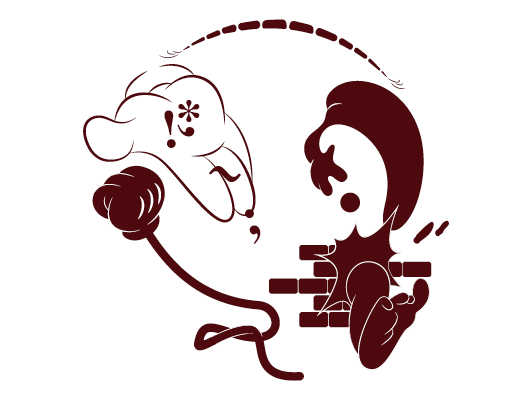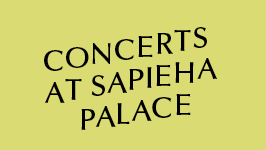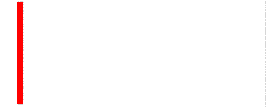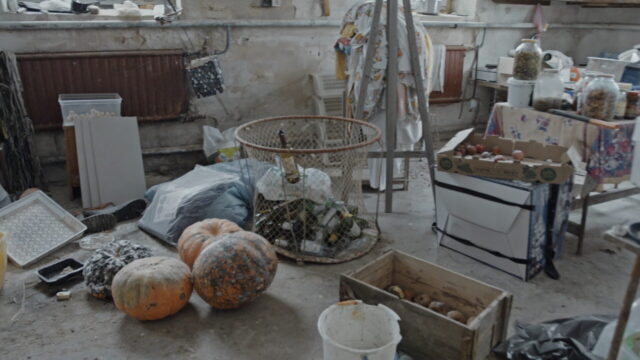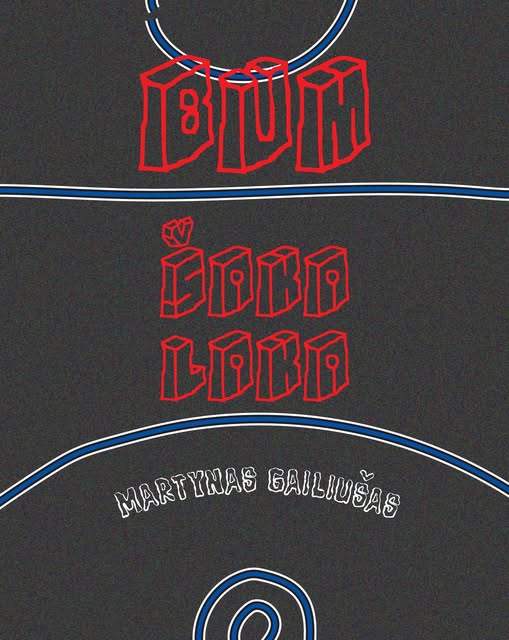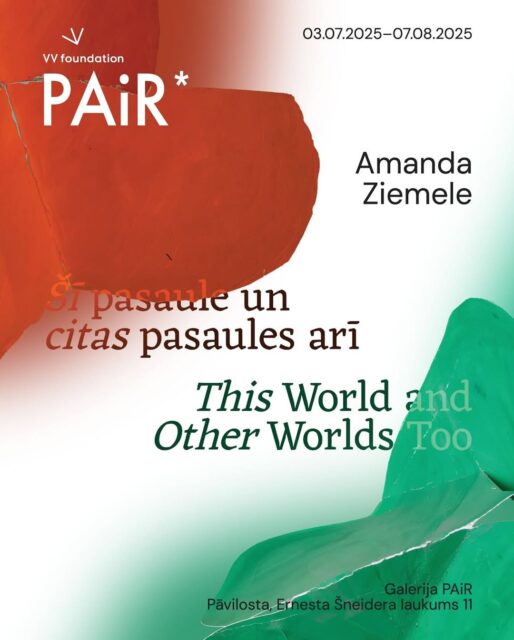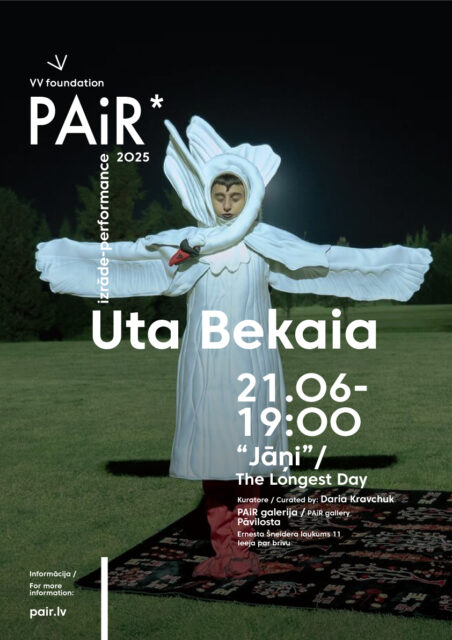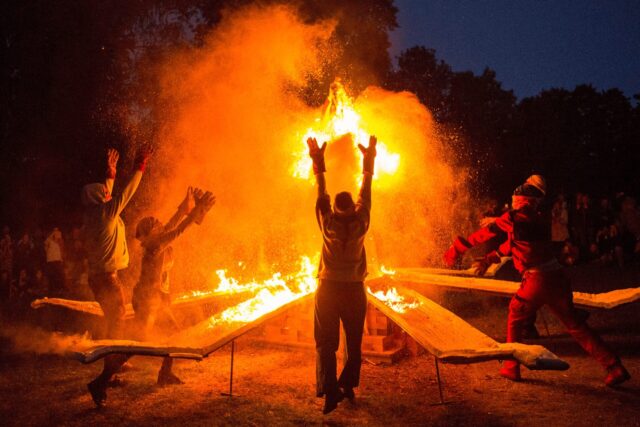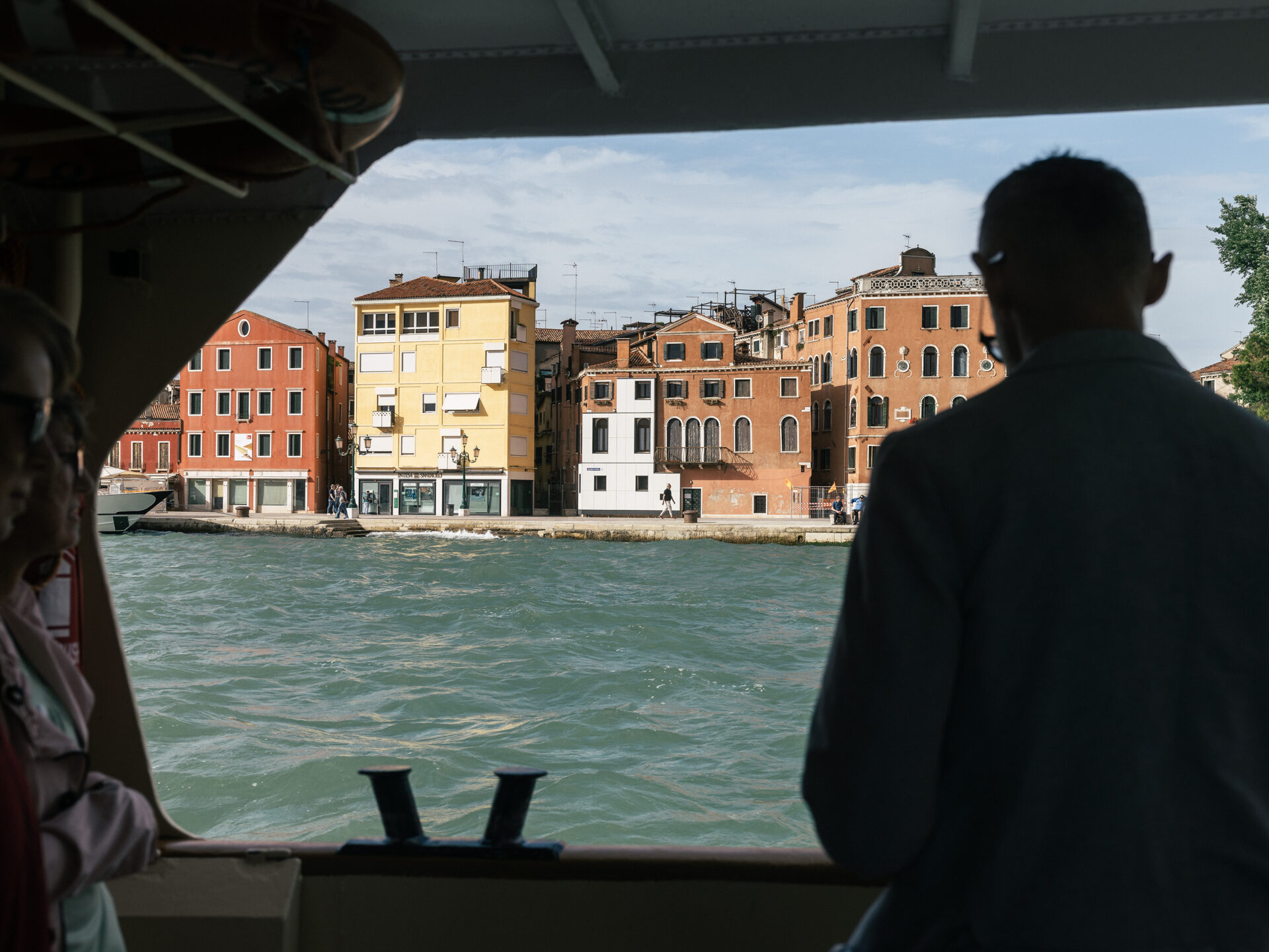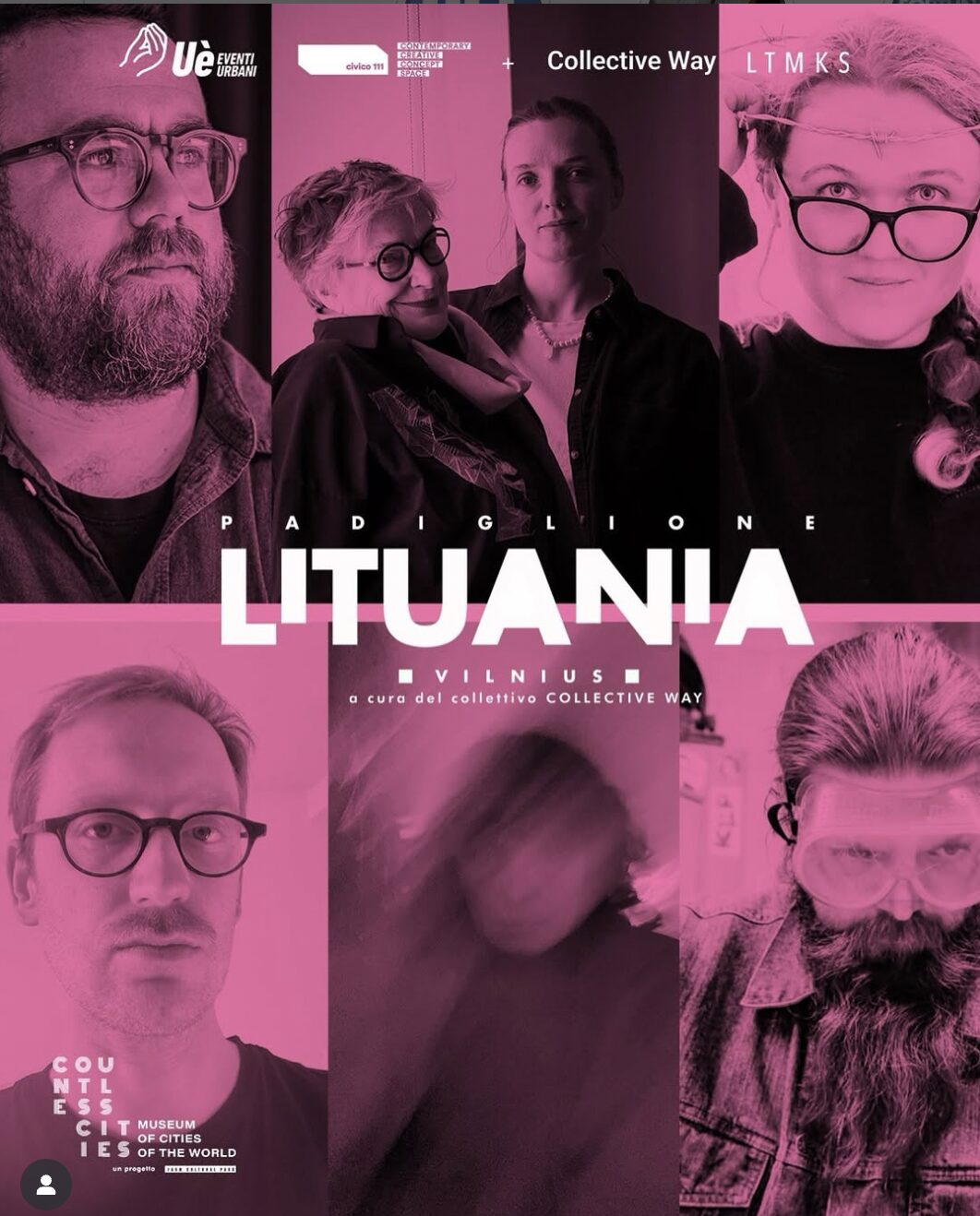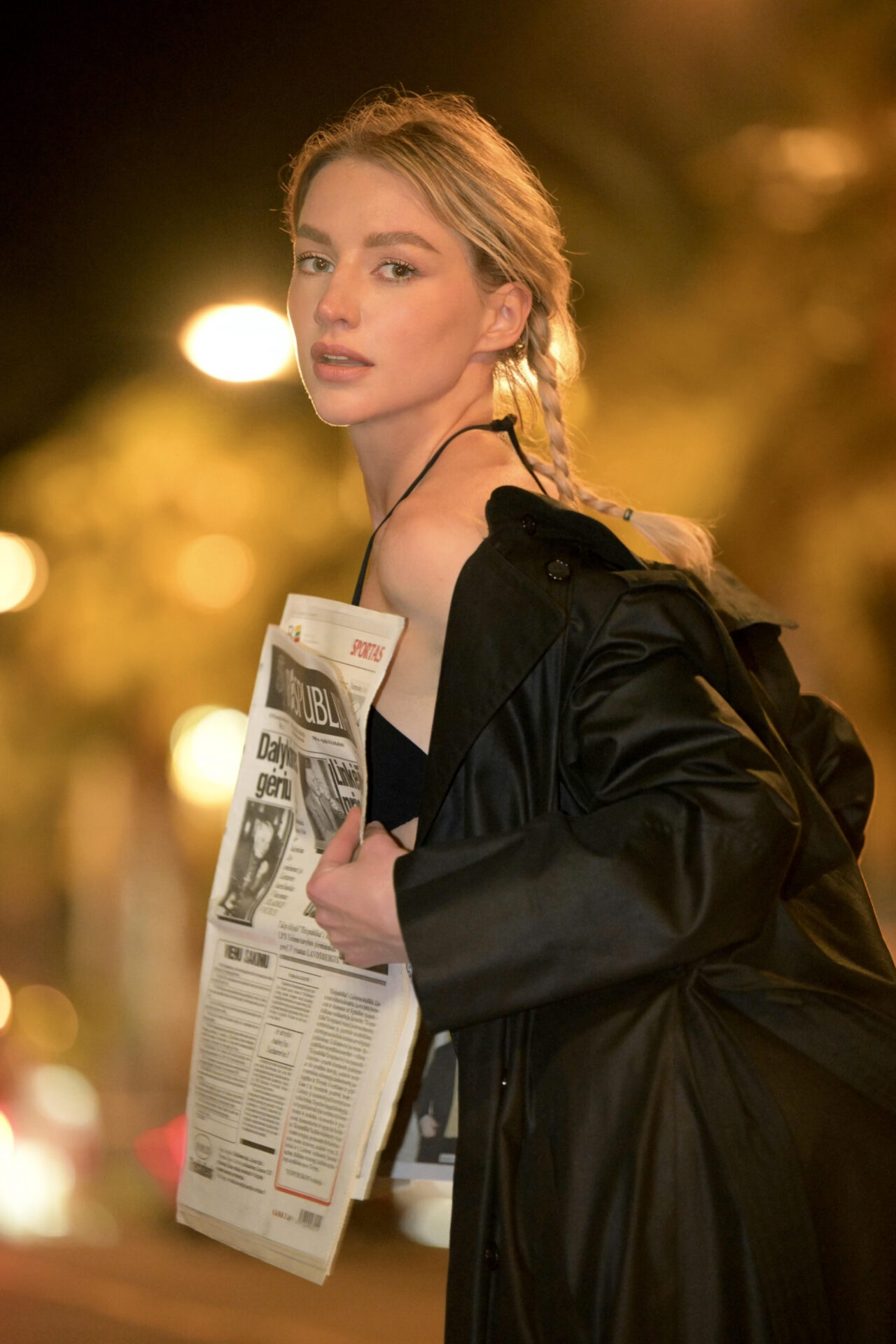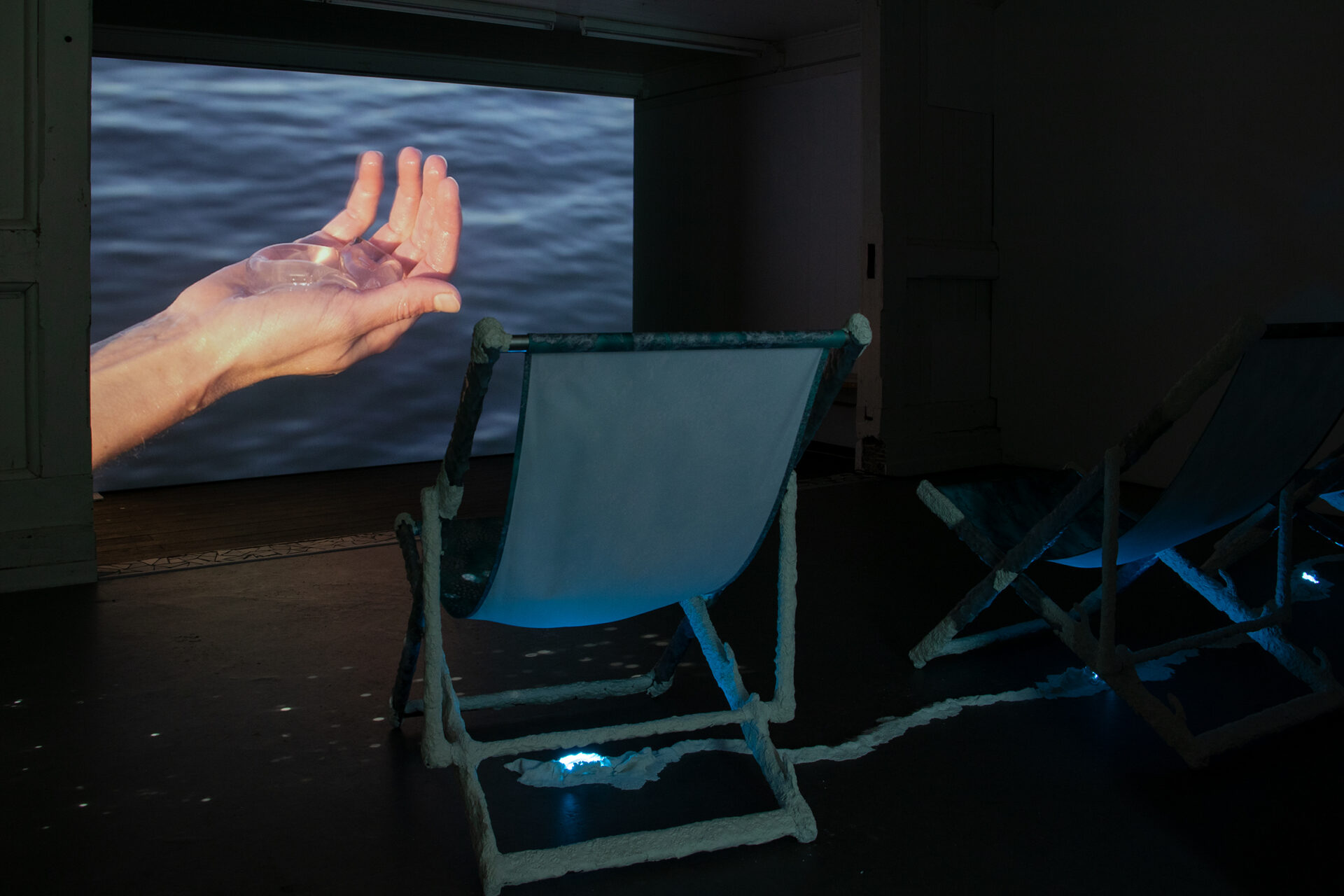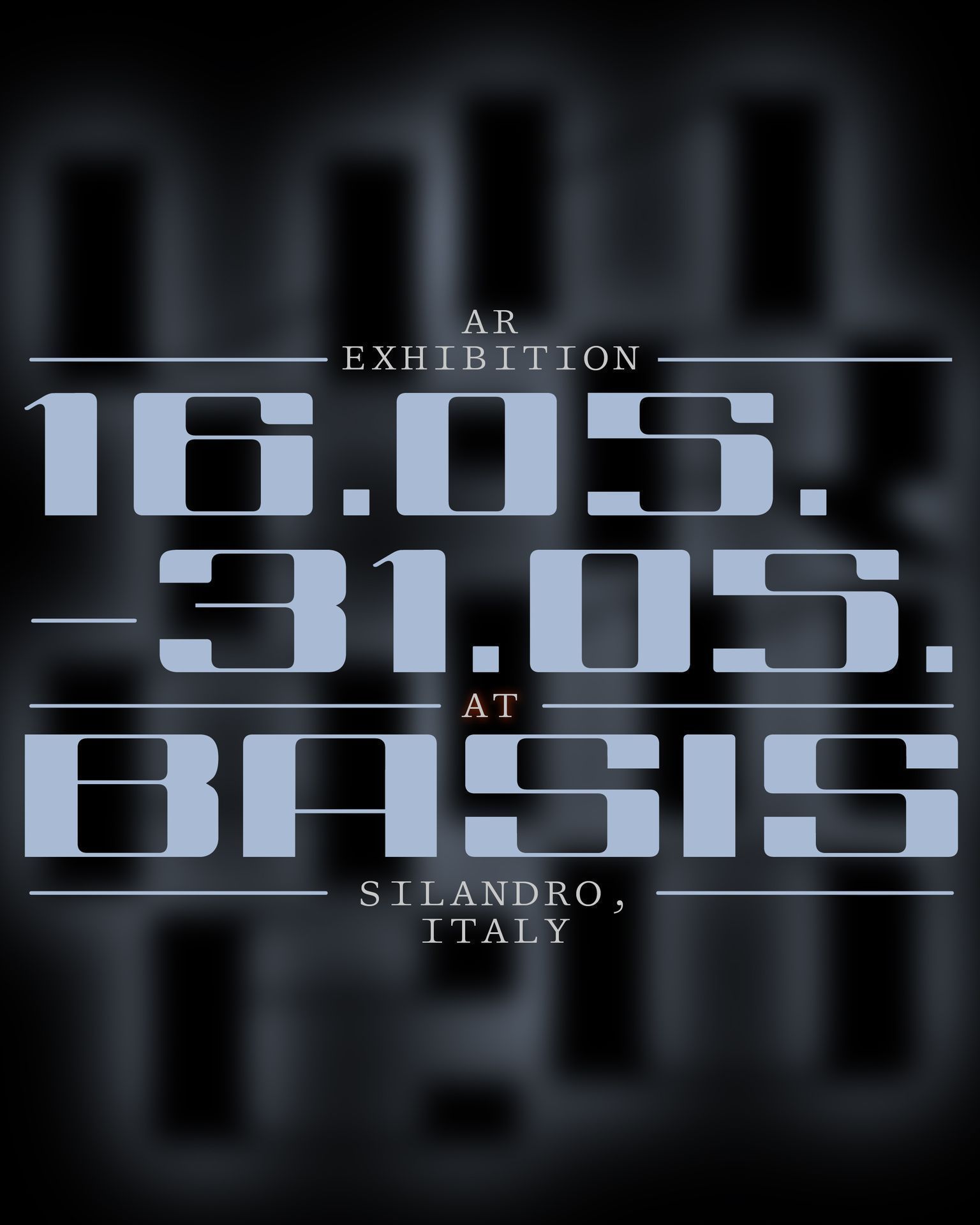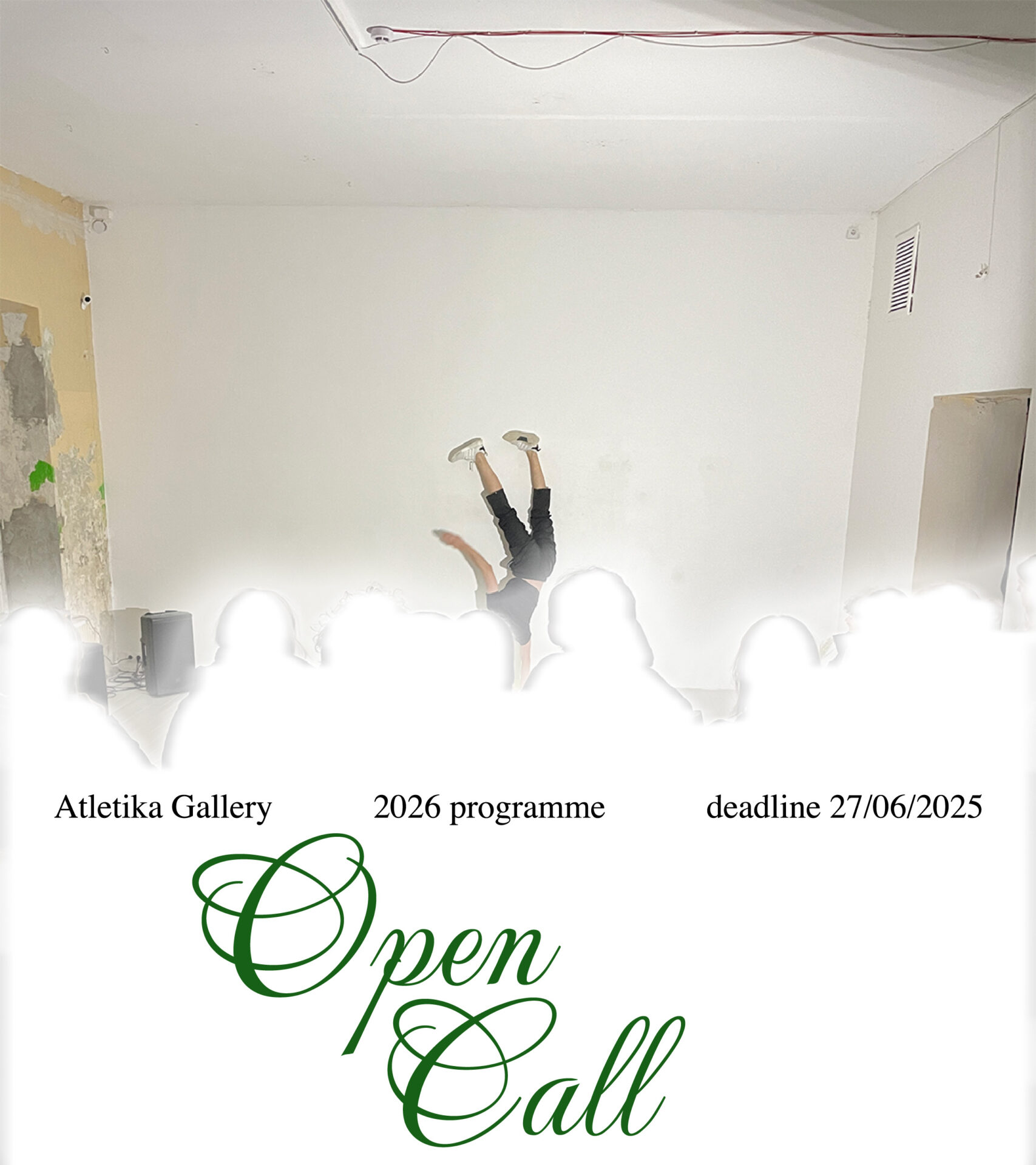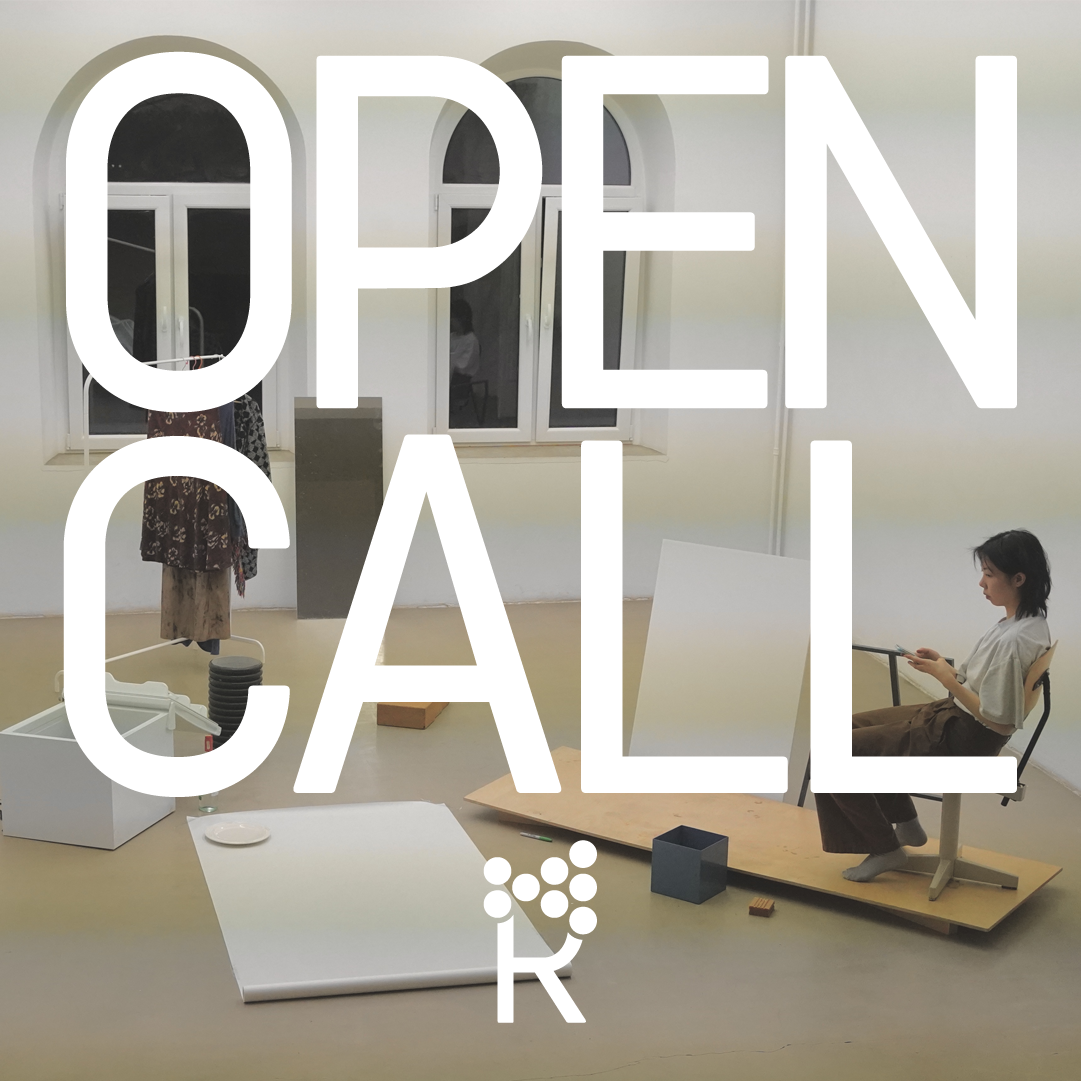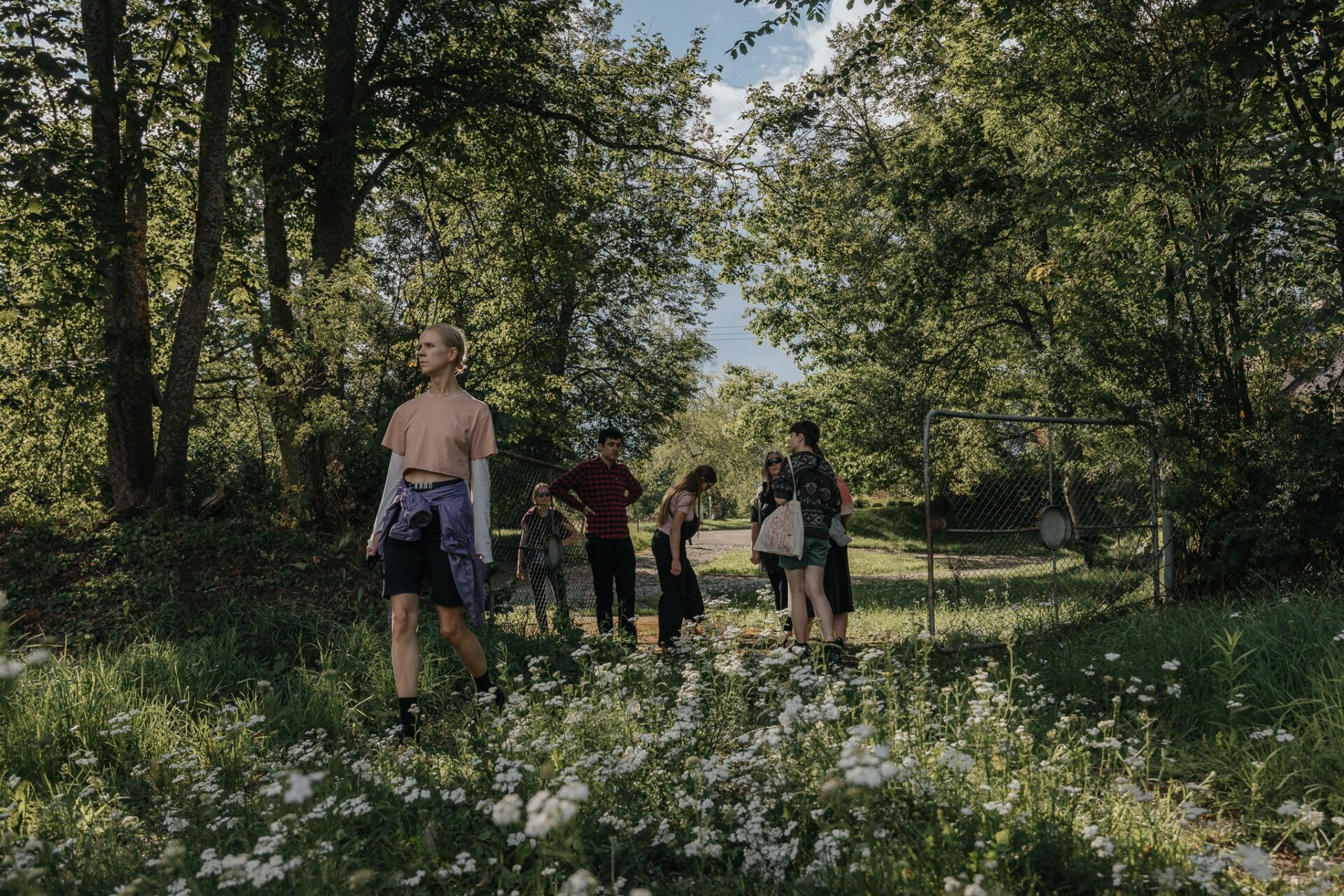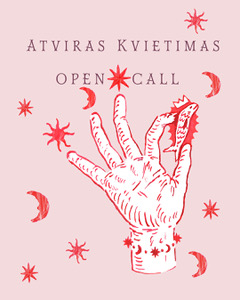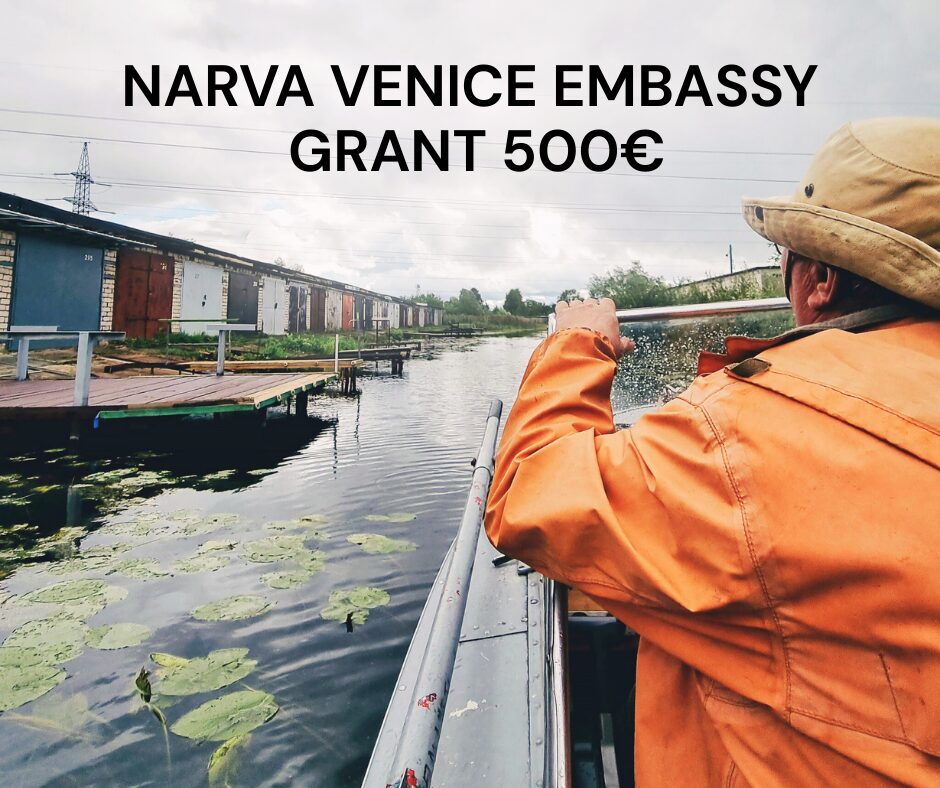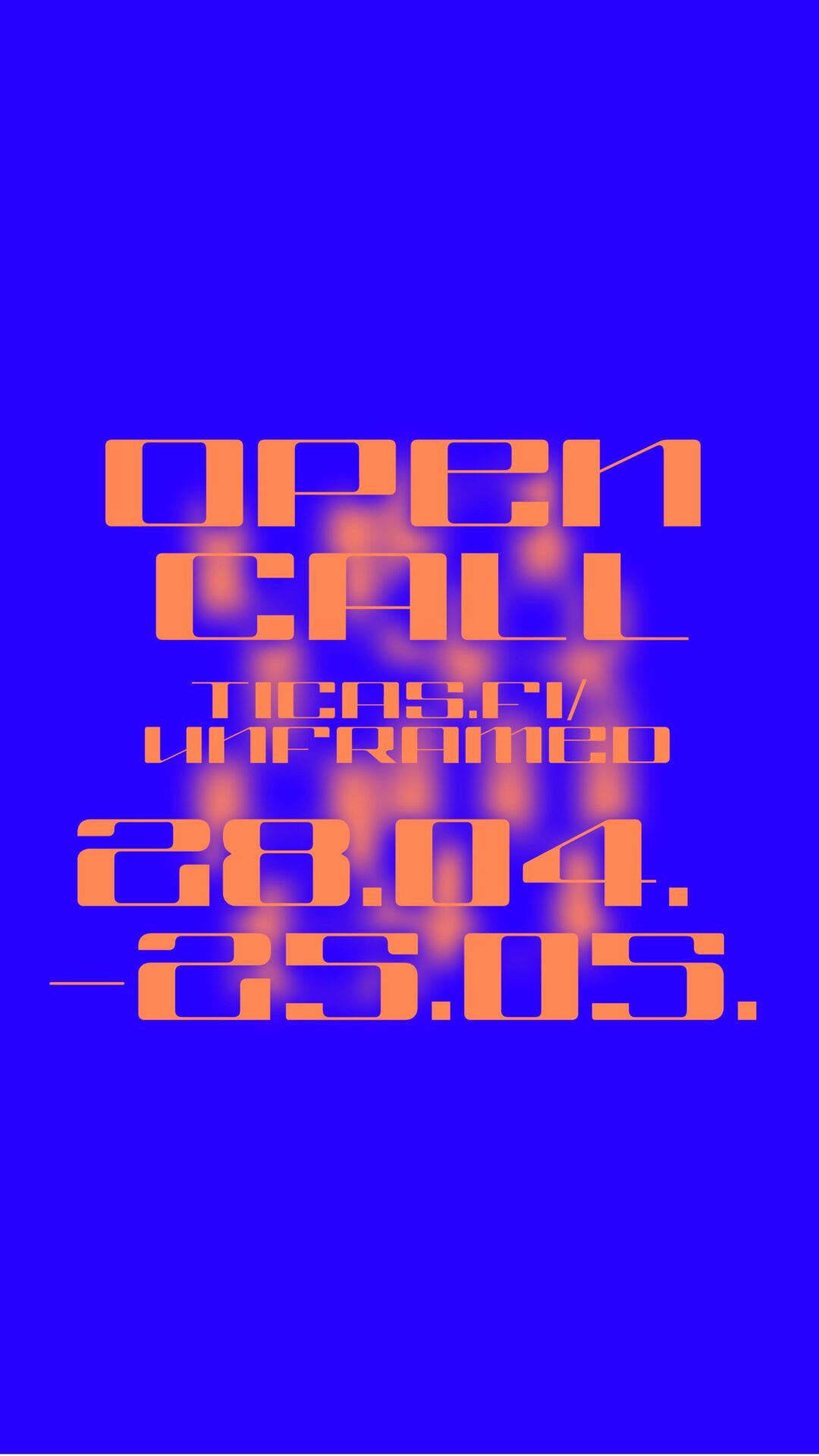I was dreamin’ when I wrote this
Forgive me if it goes astray
But when I woke up this mornin’
Could’ve sworn it was judgment day
1999, Prince
I dialled the number 8 523 10310 displayed in a room decorated by Ona Juciūtė and Laura Kaminskaitė as part of the exhibition ‘How I Walked into the Room through the Door’ at the Editorial art space. To my surprise, I discovered that I already had this contact on my phone. It had been gathering dust under the letter T for so long that I had forgotten it even existed. However, as memories started flooding back, I recalled that the artist herself had shared this number (piece) with me when I asked her to recommend some reliable taxi services one late half-sober summer evening. One would probably be hard-pressed to think of a Lithuanian artist better suited to answer the question than Laura Kaminskaitė.[1] I listened, hoping to hear someone’s voice answer me at the other end, perhaps uttering the word ‘Yellow’ like the title of the poem displayed near the glowing sequence of digits by the gallery’s floor, but all I could hear was a continuous beep as my call went unanswered.
Not unlike this story, or the increasingly rare yellow-branded taxis in Vilnius, the act of waiting for a voice at the other end of the line evokes the past. Nowadays, we rarely have to wait: in the city of today, passengers are promptly whisked away by ride-sharing services like Bolt, and our smartphones keep track of missed calls, ensuring we can call each other back … But back in 1999, I (aged nine), Laura (15), Ona (11), Edgaras (nine) and Prince Rogers Nelson (41) were waiting impatiently for a voice amid the hum of the analogue telephone. We were also anxiously anticipating the end of the world, which sparked a small technological disaster, and inspired a spiritualist revival, as well as the creation of new works of art. But it never came, remaining merely a peculiar memory, and/or a promise to return in a different form in the future.


In their exhibition at Editorial, these two contemporary Lithuanian artists come together not only in a physical space where they have both previously shown their solo works, or in the sense of returning to the late 20th century, a time characterised by ambiguous apocalyptic sentiments; they also both return to a state of waiting and uncertainty in the broadest sense. One can sense a striving for abstraction to materialise into something more concrete, for movements to become performances, for fabric to transform into clothes, and lines and paint to turn into timeless, classic gestures like blown kisses that communicate love through the telephone lines, whether it be to a stranger, a taxi dispatcher, a visitor in a contemporary art exhibition, or simply a past we have neither seen nor heard and can only clumsily imagine.
There are multiple references to such a past in this exhibition, although not all of them are as explicit as Kaminskaitė’s works Taxi Call (2023) and Serious (2023), created using bent tubes filled with glowing neon. The artist’s creative practice, characterised by a constant flirtation between symbols and meanings, finds effective expression in this medium, which itself carries a strong charge in art history. Neon signs, which began to be used in art in the first half of the 20th century, pulsated with a variety of colours in the works of Minimalists and Conceptualists. In this regard, Laura’s work is perhaps most closely related to the gestural nature of the electrified gas signs by Mario Merz and Tracey Emin, while also carrying a conceptual charge reminiscent of the work of Bruce Nauman and Joseph Kosuth. However, the content, colour and metrics of Kaminskaitė’s glass tubes are a bit of a bluff, as the conceptualised ‘neon’ signs probably do not contain actual neon gas, but other gasses. Neon was the first gas to be used in commercial signs at the beginning of the last century, emitting a bright red glow when an electrical current passes through it. Meanwhile, argon blooms in lavender purple hues (Serious?) and krypton shines bright white (Taxi Call?)[2].


Tracey Emin, The Kiss was Beautiful, 2012, neon, sold at Sotheby’s, London

Red neon, in particular, evokes cultural associations with advertising signs that were once ubiquitous in capitalist society, as well as nightlife and red-light districts: the culture of leisure, entertainment and love. While the artist’s signs glow a little colder, the neon no longer crackling with the same heated passion as it did in the signs of the metropolitan bars of the 1990s, warm feelings, including love, the most powerful one of all, are present in Kaminskaitė’s work Kisses (2021–2022) and the poetic text Yellow (2023). These evoke a sense of honesty and open-heartedness, rather than seriousness or irony:
It is said when you love someone,
you speak in your mind with that person.
What if every conversation
is a form of abstract love?
This is not the first instance where the artist has personified seemingly very abstract concepts, such as colours, names and phone numbers, transforming them into characters. She gives them playful voices, meanings that keep slipping past the perceiver, and a chameleon-like nature, not unlike wearing a different colour of lipstick every time, causing the piece to infinitely transform in the viewer’s mind. To quote Yellow, ‘Joy is the best makeup.’ The artist’s works actively reference themselves and past creations, as well as audio-visual, linguistic and gestural languages, and contexts of all kinds. They embody a never-ending process rather than a fixed outcome, despite their static nature and occasionally feigned seriousness.
The conceptual charge of the electrified signs presented in the exhibition connects Kaminskaitė’s creations with renowned works by the aforementioned 20th-century artists, as well as broader art history, hinting at an infinite array of narratives. This charge surpasses that of the artist’s gesture-based works such as Not Yet Titled (2018 and 2015) and Conversation Piece (Including Different Kinds of Motions) (2016). Characterised by improvisation, spatial dance, the fluidity of drawing, and delicate conversations among fragile lines, these works embody more subtly Kaminskaitė’s unique artistic language, and her distinctiveness in the context of artists working in this medium.


Kaminskaitė’s hand-script signs are not the only light-based works that cast shadows of the past or transport viewers back in a taxi-time machine. At first glance, Ona Juciūtė’s lightbox Simbas (2023), depicting a shoe that matches the size of a human foot, might be mistaken for yet another work by Kaminskaitė. This resemblance stems not only from the past use of light through neon tubes or lightboxes (e.g. Kaminskaitė’s Its Own Unfolding Elsewhere [2019]), but also from the contrast between Simbas (2023) and Juciūtė’s other works, which possess a tangible materiality and a plasticity of form imprinted with the artist’s touch. Positioned within the intimate twilight of the smaller of the two rooms, next to the much more ‘juciūtėan’ multi-segmented alder veneer shelf Untitled (2023), Simbas becomes yet another portal into the past.
The shoe depicted in the lightbox is an image that can be found on the internet: 100% Natural Rawhide 8” Shoe Dog Treat.[3] These treats for beloved pets are usually shaped like bones or lengths of rope, but, surprisingly, often come in the shape of a variety of shoe designs, and are made from rawhide. The material, lighter in colour than leather, and resembling parchment, finds diverse application in industries producing items such as whips, drumskins, lampshades, and, more recently, chew toys and treats for dogs.
The title Simbas chosen by Juciūtė seems to be a reference to golden-haired dog breeds like retrievers and labradors, which were commonly referred to as Simbas in Lithuania during the 1990s, possibly due to the popular animated film The Lion King (1994), featuring a golden-haired lion cub named Simba. Additionally, the artist may also be alluding to a specific line of shoes, Sambas by Adidas.[4] The fact that these rawhide treats, advertised as promoting dog health, are actually harmful to them, akin to the way cigarettes were once recommended by doctors, can also be seen as a relic of the past.[5]

Juciūtė’s work, like Kaminskaitė’s, engages in a dialogue with her previous works shown in the exhibition ‘Every Dog is a Lion’ at Editorial in 2020. In that exhibition, certain treats, such as human ears kneaded out of bread with vanilla earrings, were exhibited alongside a screen showing a video loop that featured a dog. The work, also entitled Every Dog is a Lion, showed a serious-faced judge, now in a dog show rather than a contemporary art exhibition, evaluating the tail qualities of a fox terrier, the lion in Juciūtė’s exhibition. The artist’s teasing back-and-forth movements, akin to steps in samba or some other dance, resonate with the syncopated communications of Kaminskaitė, characterised by allusions and fragments of conversations or stories. The artists dance together rather than separately, and, through their works, enter into a light-footed and pleasantly exhilarating swing, whose infectious energy permeates the soles of our feet as visitors to the exhibition.
In a broader sense, Juciūtė’s Simbas harks back to the piece by Liudvikas Buklys entitled Prototypes for Secondary Schools (2014), created almost a decade ago. Conceived as a prelude to the 12th Baltic Triennial, the artist’s work, also a lightbox, depicts a classic black men’s shoe. Buklys’ shoe has a different origin than Juciūtė’s, but an aggressive appropriation of imagery is also taking place here, as the artist took a lightbox he encountered near a shoe shop at the intersection of Trakų and Pylimo streets in Vilnius (still operating today), and placed it in a corridor in the Salomėja Nėris Gymnasium, located a few hundred metres away. Buklys may have been alluding to certain cultural relics of the past, particularly the uniformity of the educational system, where the student serves as a prototype for future society, a system that, like those classic yet old-fashioned shoes, everyone aspires to outgrow. While Juciūtė and Buklys tread different paths through their respective fields, their works occasionally, and perhaps serendipitously, intersect in this exhibition, forming an intriguing pair, where each shoe curiously represents its own decade.

Liudvikas Buklys, Prototypes for Secondary Schools, 2014. Photograph by Andrej Vasilenko
Perhaps the path traced by these shoes could be followed even further back in time, reaching the 1980s, when the most renowned pair of shoes in the history of Lithuanian art was created, now placed neatly in the permanent exhibition of the National Gallery of Art. I am, of course, referring to the most esteemed shoemaker in the realm of art, Deimantas Narkevičius, and his piece Too Long on a Pedestal (1994), a pair of classic shoes filled with table salt. Despite the contrasting political and economic conditions addressed by Narkevičius’ and Juciūtė’s works, it is intriguing how the two pieces unexpectedly converge through the shared connection between shoes and food. Travelling even further back in time, and expanding to an international context, one could recall Warhol’s high heels or Van Gogh’s tattered boots. Joking aside, these examples establish a link between Simbas and not only the other works, themes and moods in the exhibition, but also art history itself, leaving an indelible shoeprint in the landscape of Lithuanian art.

Deimantas Narkevičius, Too Long on a Pedestal, 1994
Juciūtė’s work often combines industrial production with handmade elements, or everyday objects such as clothing and furniture with homemade confectionery. This interplay between different forms of production is evident not only in Simbas and Themes (2020), but also in other works by Juciūtė. For instance, Maxi (2023) resembles cinnamon sticks or oversize jeans, the objects in Unlettering (2023) evoke loose-fitting waistcoats or roasted marshmallows, while Does and Dons (2023) embodies pleated skirts and layered cakes like tiramisu. Interestingly, Kaminskaitė has also been known to ‘sweeten’ art experiences in her own way when displaying her ongoing work Sugar Entertainment (2011). Like the white cube of the gallery, the sugar cube absorbs the visitor’s experiences, and offers an aesthetic experience that can be tasted on the tip of the tongue. This creates a synaesthesia of the senses, which is characteristic of Kaminskaitė’s practice, and abstracts the viewer’s usual field of meanings.[6]
It would be naïve to think that this sweetness is mere sugar. Both Kaminskaitė and Juciūtė take on the human body in a personal and sensitive manner, evoking the entire emotional range associated with it, such as tenderness, intimacy and safety. Juciūtė’s furniture and clothing pieces appear like objects that have suffered production defects at the factory, which paradoxically seems to have ensured their current existence. These objects very often allude to parts of the human body, as if imprinted within them, even though the artist hardly ever depicts the human form directly.[7] This is evident in garment-based works like Unlettering, where rubbery hands almost seem to be reaching out to embrace invisible torsos, or Simbas, waiting for the foot they are meant to fit. The same can be said of the furniture-based pieces, such as shelves made of various wood veneers, suggesting a domestic space filled with the presence of bodies in close motion and the tactile interaction of hands, or Bruno Mathsson Pernilla’s chair in Weekends (2020), carved based on the shape of a person’s back printed in the snow. An exception to this pattern might be found in Juciūtė’s past video piece Windysilk, which presents an ephemeral garment billowing on a stable and clearly visible human figure, yet never taking shape, embodying the flip-side of this thesis.[8]



While Juciūtė’s works focus more on the internal, the enclosed, the torn jeans and corsets attempting to conceal an emerging nudity, Kaminskaitė’s works are more related to the external, the open, and the act of revealing. The aforementioned neon signs in alleyways and night-time taxi rides, a stranger’s kisses that dissipate like a dream in the morning, all find resonance here. Kaminskaitė employs a linguistic and seemingly more open language, while Juciūtė’s silent works communicate solely through form and material, creating a warmer, more tactile experience that engages the body through matter (with Juciūtė’s choice of materials playing a significant role). This is by no means a shortcoming of Kaminskaitė’s works: they perhaps express their feelings in a more laconic manner, but are no less intimate, distinct and pleasantly electrifying. This is best expressed by the artist herself in the final stanza of Yellow:
There can be many realities and textures in the world,
perhaps, not many worlds in reality.
From everybody to re-body
Talk is a form of love.
P.S.
The phrase ‘one love’, which was often heard in the 20th century, and nowadays sounds a bit stale, has lost its original sweetness over time, much like a stick of chewing gum bought at a kiosk in the 1990s. However, as we find ourselves in 2023, awaiting the end of the world as we did in 1999, albeit for different reasons, one could still attempt to offer some hope to humanity, and especially the younger members of our society, by reiterating that love still exists, and comes in many different forms. One of them, perhaps, is the exhibition ‘How I Walked into the Room through the Door’, curated by Edgaras Gerasimovičius, presenting works by Laura Kaminskaitė and Ona Juciūtė.
Laura Kaminskaitė and Ona Juciūtė’s exhibition ‘How I Walked into the Room through the Door’ was at Editorial (3 Latako St, Vilnius) until 1 July.
This article was financed by the Lithuanian Council for Culture
Photographs by Editorial
Translated by Paulius Balčytis
[1] Laura Kaminskaitė has produced various artworks featuring taxi cabs, their drivers and passengers, including Taxi Driver (2014), Night Drive (2021) and Exhition (2013). The artist has also openly discussed her personal experiences and fascination with taxis, and has even been interviewed inside a moving car by the contemporary art curator Virginija Januškevičiūtė: https://www.youtube.com/watch?v=fnwLpG2vFQY.
[2] Gemma Cirignano What is Neon Art, Really?, published in ‘Irradicant’ on 8 April 2022; https://irradicant.com/What-is-Neon-Art-Really-1
[3] https://www.petworld.ie/rawhide-shoe-8/
[4] Adidas have also created a baby shoe with the same name as Juciūtė’s piece; https://www.levelshoes.com/adidas-activeplay-simba-sneakers-prints-fabric-baby-sneakers-plabkk.html
[5] Anna Jacoby We’ve Got a Bone to Pick with Rawhide, published in ‘Oh Futropolis’ on 5 July 2021
[6] Inesa Pavlovskaitė: ‘A sugar cube is an object containing, according to the artist, the aesthetics of a white cube exhibition space and sugar’s ability to contain a faint but reliable record of the events it has witnessed. Handcrafted by the artist to be cubic, a sugar square is evocative of a white gallery space, almost in ratio-like relation. The assumption of a fictional or paranormal nature that a sugar cube is a documentarian apparatus, which manages to memorialise (astral and mundane) information, delineates the secret function this piece bears in every exhibition or artistic project it is introduced into. As it carries a whole exhibition in itself, a sugar cube thus becomes a gustatory metonymy.’
[7] Lithuanian Visual Arts: Ona Juciūtė; https://www.youtube.com/watch?v=A-QmSvcMOjo
[8] Paulius Andriuškevičius, Paroda „Palydos“ parodų erdvėje „Swallow“; https://artnews.lt/paroda-palydos-parodu-erdveje-swallow-59281
